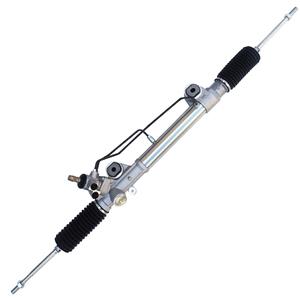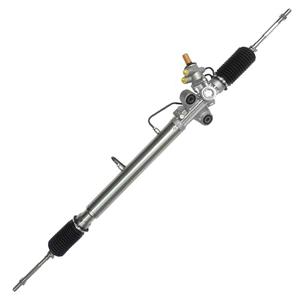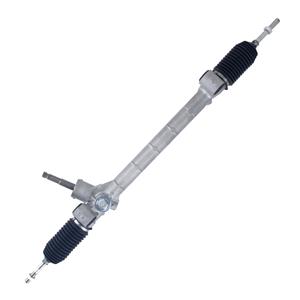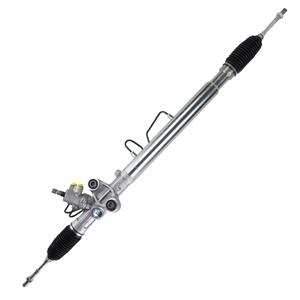What are the alternatives to rack and pinion steering systems?
Rack and pinion steering systems have long been a widely used mechanical steering device in the automotive industry. Due to its simple structure, quick response and relatively low manufacturing cost, it has become the first choice for many models. However, with the advancement of technology and the increase in automotive performance requirements, more and more alternative steering systems have appeared on the market to meet the needs of different types of vehicles and drivers.
These alternatives not only differ in function, but also set higher standards in terms of efficiency, comfort and safety.
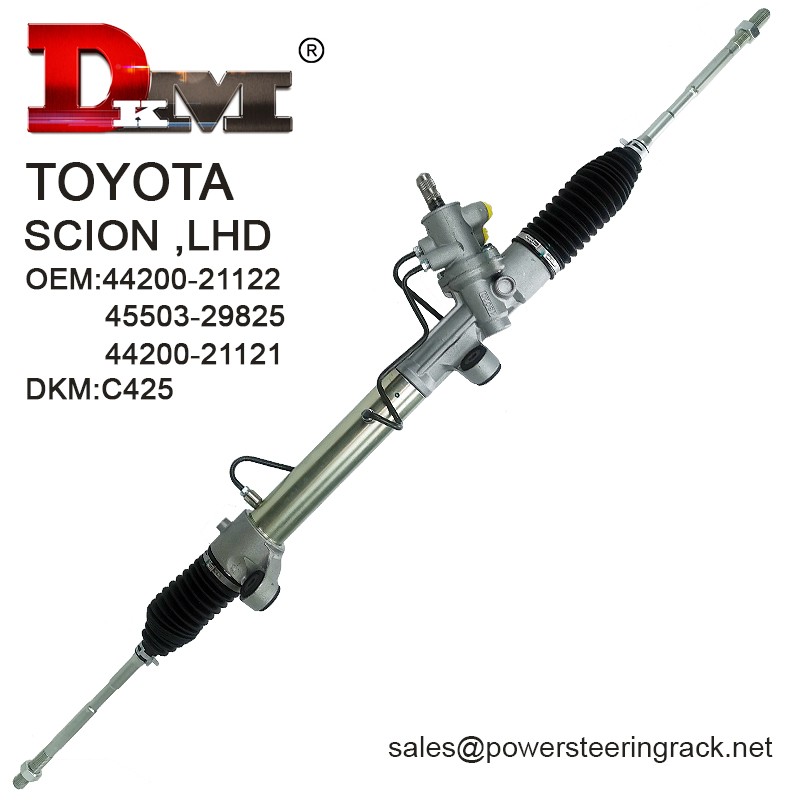
Hydraulic power steering system
Hydraulic power steering system is one of the earliest technologies to replace traditional rack and pinion steering systems. The system greatly reduces the force required by the driver to turn the steering wheel through the pressure provided by the hydraulic pump, thereby improving the comfort of control.
1. Working principle of hydraulic power steering system:
The hydraulic power steering system uses an engine-driven hydraulic pump to generate hydraulic pressure. This pressure is adjusted by the valve caused by the turning of the steering wheel and acts on the steering system to assist the vehicle in steering. Specifically, the hydraulic pump sends hydraulic oil into the hydraulic cylinder in the steering rack, and the pressure oil pushes the rack to move, causing the wheels to turn.
2. Advantages of hydraulic power steering system:
● Provides steering assistance, reduces the driver's physical exertion, especially when driving at low speed or parking.
● The hydraulic power steering system operates smoothly and can provide a better driving experience under complex road conditions.
3. Disadvantages of hydraulic power steering system:
● The system is complex and the repair and maintenance costs are relatively high.
● The hydraulic power steering system relies on the engine to operate. When the engine is turned off or fails, the power assistance effect is greatly reduced.
Although the hydraulic power steering system has significantly improved comfort, its impact on fuel economy and the maintenance problems caused by the increased complexity of the system have led to it being gradually replaced by newer technologies.
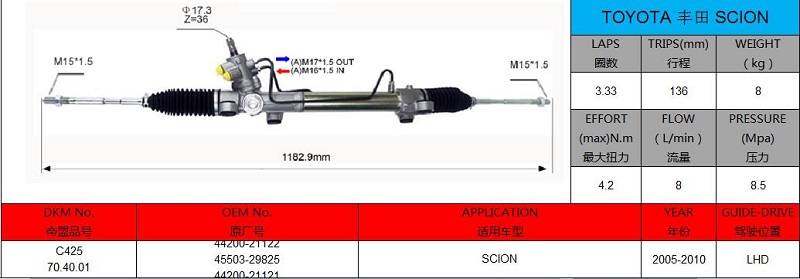
Electronic power steering system
The electronic power steering system is one of the most widely used alternative systems. Compared with the hydraulic power steering system, EPS abandons the hydraulic device and uses an electric motor to provide steering assistance, so it performs well in efficiency and reliability.
1. Working principle of electronic power steering system:
The electronic power steering system monitors the steering angle and speed of the steering wheel through sensors, and the electronic control unit (ECU) processes this data to determine the output power of the electric motor to assist the vehicle in steering.
2. Advantages of electronic power steering system:
● High fuel efficiency: Since the hydraulic pump drive is no longer required, the electronic power steering system can reduce the load on the engine, thereby improving fuel economy.
● Quick response: The electronic system can adjust the power in real time, provide more precise steering control, and improve the driving experience.
● Low maintenance cost: Compared with the hydraulic system, the EPS system has a simpler structure, a lower failure rate, and is more convenient to maintain.
3. Disadvantages of electronic power steering system:
● The electronic system relies heavily on electricity, and when the battery power is low, it may affect the normal operation of the system.
● For some drivers, the steering feedback of the electronic power steering system is light and may lack the "road feel" of the traditional mechanical system.
Despite some disadvantages, the comprehensive advantages of the electronic power steering system make it one of the most common steering systems on the market, especially in terms of fuel economy and driving comfort, which is widely recognized.
Integrated Dynamic Steering System
Integrated Dynamic Steering System is an advanced steering system used in high-end models. It combines the advantages of mechanical, hydraulic and electronic control systems to achieve a perfect combination of flexibility and stability.
1. Working principle of Integrated Dynamic Steering System:
The IDS system combines the reliability of mechanical steering system, the power-assisting effect of hydraulic system and the flexibility of electronic control system. According to driving conditions and vehicle speed, the system can intelligently adjust the steering ratio and steering power to provide a more precise and comfortable driving experience.
2. Advantages of Integrated Dynamic Steering System:
● Highly intelligent: The system can adaptively adjust according to road conditions, speed and driving style to provide the driver with the best control experience.
● Improve safety: When driving at high speed, the system automatically reduces the steering ratio and increases the damping feeling of the steering wheel to prevent accidents caused by misoperation of the steering wheel.
● Comprehensively optimize the driving experience: When driving at low speed or parking, the system increases the power to make the steering wheel operation easier, and when driving at high speed, it provides more stable steering control.
3. Disadvantages of Integrated Dynamic Steering System:
● The system is complex and costly, and is usually only used in high-end or sports models.
● The reliability requirements of the electronic control system are extremely high, and regular system inspection and maintenance are required.
The flexibility and intelligent design of the IDS system have greatly improved driving safety and comfort, but its high cost and complex maintenance requirements have also limited its popularity in mass-market models.

All-Wheel Steering System
The All-Wheel Steering System is an advanced steering technology that is usually used to improve the handling performance of vehicles at high and low speeds. The system enables the rear wheels of the vehicle to participate in steering under certain conditions, thereby improving overall handling and stability.
1. Working principle of the All-Wheel Steering System:
When the AWS system is driving at low speed, the rear wheels will rotate in the opposite direction of the front wheels to reduce the turning radius and improve the flexibility of the vehicle; when driving at high speed, the rear wheels will rotate in the same direction as the front wheels to enhance the stability and steering response of the vehicle.
2. Advantages of all-wheel steering system:
● Improve turning flexibility: In urban road conditions or narrow parking lots, AWS can significantly reduce the turning radius and improve the convenience of parking and low-speed turning.
● Improve high-speed stability: When driving on the highway, AWS provides more stable steering performance, reduces body roll, and improves driving safety.
● Enhanced controllability: All-wheel steering can provide better vehicle controllability under extreme driving conditions, such as high-speed lane changes or emergency obstacle avoidance.
3. Disadvantages of all-wheel steering system:
● High system complexity increases the design and manufacturing costs of the vehicle.
● The participation of rear-wheel steering may bring certain control difficulties to drivers who are not familiar with the system, especially in emergency situations.
Although the all-wheel steering system is not widely popular in mass-market models, its performance in improving vehicle controllability and stability makes it an ideal choice for high-performance and luxury models.

Steer-by-Wire
Steer-by-Wire (SBW) is a steering system that completely abandons mechanical connections and replaces them with electronic signal transmission and control. The application of this technology makes the design of vehicle steering systems more flexible and lays the foundation for the development of future automotive autonomous driving technology.
1. Working principle of steer-by-wire system:
The SBW system transmits the driver's steering intention to the wheels through sensors and electric actuators, without relying on traditional mechanical connections. The connection between the steering wheel and the wheel relies entirely on electronic signals, and the system can adjust the steering angle and power assistance in real time to provide precise steering control.
2. Advantages of steer-by-wire system:
● High design flexibility: Since it is no longer restricted by mechanical connections, the interior design of the vehicle can be more free, and the position and shape of the steering wheel can be more innovative.
● Fast response speed: The transmission speed of electronic signals is faster than that of mechanical and hydraulic systems, which can provide faster steering response.
● Higher safety: The system can dynamically adjust according to driving conditions, such as increasing steering damping at high speeds to prevent oversteering.
3. Disadvantages of steer-by-wire system:
● Due to its complete reliance on electronic systems, the reliability and safety of SBW systems become the primary concern, and system failure may cause serious safety problems.
● Due to the high R&D and manufacturing costs, the system is currently mainly used in concept cars and high-end models.
Although the steer-by-wire system has not yet been widely used, it has brought revolutionary changes in the field of automotive steering systems. As the technology continues to mature, SBW is expected to become one of the mainstream technologies for automotive steering systems in the future.
As a leading supplier of power steering systems, Guangdong Diamond Auto Parts Co., Ltd. supports buyers worldwide with high-quality, cost-effective products. Operating a factory equipped with over 280 CNC machines, we produce over 300,000 steering units annually. Our solutions cater to European, Japanese, and American vehicles, with bulk purchasing options available at competitive prices. From domestic distributors to international importers, we provide affordable, reliable, and customized steering solutions for every buyer.

